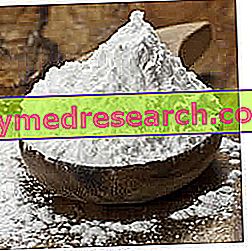By Dr. Alessio Dini
Today we focus our attention on a recent discovery by Italian researchers, the pRPQ protein, why can it be important?

Let's start by giving a few names.
Celiac disease is a permanent autoimmune food intolerance against gliadin, a soluble alcohol component of gluten. Gluten is a protein complex (gliadin plus glutenin) contained in cereals such as wheat, spelled, rye, kamut and barley.
It is easy to understand that in subjects suffering from celiac disease the administration of these cereals has a toxic role and leads to the development of an inflammatory reaction that over time damages the intestinal mucosa causing atrophy of the villi.
Celiac disease usually appears in infancy, it typically manifests itself with weight loss, nutritional deficiencies, anemia and fatigue (consequent to defects in nutrient absorption) and gastrointestinal disorders such as dyspepsia, digestive difficulties, loss of appetite, diarrhea.
In the forms that appear in adulthood these symptoms may be lacking, be very blurred, or even replaced or accompanied by less specific manifestations, such as lack of strength, irritability and nervousness.
Now let's talk about the discovery.
Some researchers of the Istituto Superiore di Sanità (ISS) have isolated a decapeptide (molecule made up of 10 amino acids) within the sequence of the gluten fraction, called pRPQ, which counteracts the toxic effect of the gluten itself.
This peptide is naturally present in gluten, even if in small quantities, so it is not able to counteract the toxic action of other components. In vitro, on cell cultures and on intestinal mucosa fragments obtained from celiacs, it has been shown that by administering the pRPQ peptide in similar concentrations to those of gliadin, no lesion typical of celiac disease occurs.
This is therefore an important step for Italian research, which opens us to new horizons in the prevention and treatment of celiac disease. We can reasonably say that, if the results obtained in vitro, will be confirmed by further in vivo studies, even people with celiac disease will be able to return to reintroduce into their diet those cereals and their derivatives until then considered toxic, without incurring any problem.
Since it is a natural substance, it is also conceivable to create a wheat with high amounts of the peptide, which can naturally counteract the action of toxic gluten fractions. The hypothesis is not science fiction because Italian researchers have also identified the "gene" that induces pRPQ synthesis, therefore, at least in theory, with a relatively simple genetic modification grains could be created that express high amounts of pRPQ and that for this contrasts the toxic sequences of the gliadin, therefore obtaining a wheat suitable for everyone's diet, without changing its nutritional and organoleptic characteristics.
According to the Italian Celiac Association (AIC), the incidence of this intolerance in Italy is one case per 100-150 people. Celiacs, therefore, could be around 400 thousand, but only 35 thousand have been diagnosed. Every year, the AIC always supports, five thousand new diagnoses are made and each year 2, 800 new celiacs are born, with an annual increase of 9%.
This data gives us a clear image of the importance of this little big discovery made in Italy.



